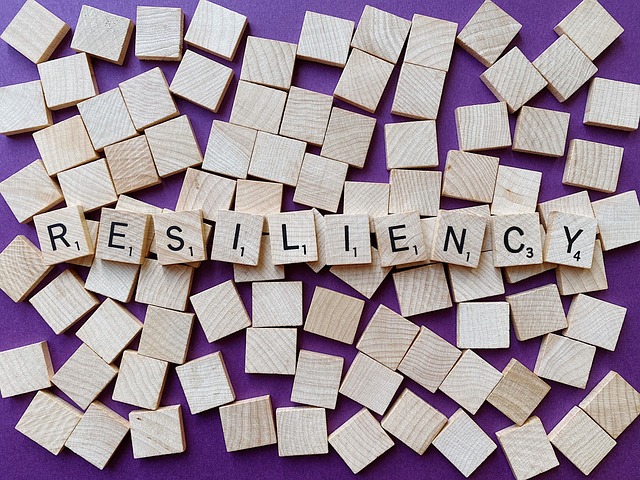Understanding the Foundation of Startup Culture
In a bustling ecosystem of innovation, startups stand out for their unique cultures. These environments foster creativity, experimentation, and, importantly, the freedom to embrace failure. But why is failure such a pivotal part of a startup culture? To comprehend this, we must first dive into the characteristics that define a robust startup culture. These workplaces prioritize agility, collaboration, and quick decision-making. They thrive on diverse ideas and encourage team members to take creative risks. In these settings, failure isn’t merely accepted; it’s seen as an essential stepping stone toward success.
Cultivating this kind of atmosphere starts with leaders setting the tone. When executives exemplify openness and vulnerability, they ignite a culture where employees feel safe to share ideas without the fear of being judged. The goal here is to establish a safe space where experimentation is celebrated. By promoting an environment of open communication, teams can engage in rich discussions about what works and what doesn’t, fostering a continual learning mindset. Encouraging this mindset becomes the foundation upon which innovative ideas can flourish. Additionally, integrating them into training programs or onboarding sessions helps newcomers appreciate the cultural fabric of the startup right from the start.
The Importance of Embracing Failure
In the landscape of startups, embracing failure isn’t simply a nicety; it forms the bedrock of robust innovation. There’s a quote by Thomas Edison that encapsulates this: “I have not failed. I’ve just found 10,000 ways that won’t work.” This perspective resonates profoundly in the startup ecosystem. Failure fosters resilience and adaptability, essential traits for navigating the uncertain waters of business. When a startup acknowledges that mistakes are inevitable, it becomes empowered to learn from them actively. Rather than viewing failure as a setback, leaders should frame it as a learning opportunity—an occasion to iterate on products, refine strategies, or reshape team dynamics.
Moreover, research consistently shows that companies that embrace failure tend to outperform those that don’t. Why is that? Well, failure leads to valuable insights. Each misstep offers data and experiences that inform future decisions. This continuous feedback loop creates a dynamic where innovation can thrive. Employees, inspired by these insights, become more inclined to think outside the box. They stop fearing failure, recognizing it as part of the evolution of great ideas. When failure is accepted, organizations can pivot more easily, identifying what doesn’t resonate with their audience and acting on those lessons more swiftly.
Building a Supportive Environment for Risk-Taking
Creating a startup culture that embraces failure requires diligent effort toward fostering a supportive environment. Leaders play a crucial role in shaping perspectives on risk-taking. Open discussions about past failures not only humanize leadership but also empower employees. When leaders share their stumbles, it cultivates a sense of camaraderie and encourages openness among team members. Consequently, employees feel emboldened to share their own experiences, knowing they won’t face backlash for their missteps.
Additionally, providing platforms for feedback and reflection can significantly bolster this supportive culture. Regular feedback loops encourage continuous improvement and nurture an organizational mindset focused on growth. Tools like retrospectives or post-mortem meetings allow teams to analyze projects in their entirety, devoting time to what went wrong, but also celebrating what went right. These platforms reinforce the belief that every experience—positive or negative—holds value. By embedding such practices into the company’s routine, team members start to feel more secure sharing their ideas, leading to greater innovation.
Incorporating Learning into the Framework
To truly make a startup culture that embraces failure effective, incorporating structured learning initiatives becomes paramount. Businesses must move beyond merely acknowledging failures; they need to ensure that lessons learned influence future actions. Consider creating a learning library or knowledge-sharing platform where teams can document their experiences and insights. By codifying lessons learned, startups can build a repository of information that serves as a reference for all employees. This shared knowledge becomes a valuable asset, allowing others to leverage past experiences without having to go through similar trials themselves.
Training sessions dedicated to innovation and resilience can also play a valuable role here. Workshops can focus on problem-solving under uncertainty or strategies for navigating setbacks—teaching employees the skills to turn failure into a driving force for future success. Furthermore, embracing failure as a part of the learning process encourages employees to take ownership of their projects. Knowing they have the space to innovate can transform complacency into creativity. Encouraging calculated risk-taking gives rise to an atmosphere rich in exploration and discovery.
Recognizing and Celebrating Failure
That’s right—celebrating failure is a significant aspect of reinforcing a startup culture that embraces innovation. Recognition might seem counterintuitive at first glance, yet it’s imperative to solidify the belief that failure is acceptable. For instance, consider designating ‘failure awards’ or sessions specifically aimed at sharing insightful lessons. You can carve out time in team meetings to celebrate a ‘failure of the month’ where employees spotlight valuable lessons learned from their missteps. This act positions failure as a contributor to the company’s evolution rather than a damper on morale.
Moreover, by instituting rituals that recognize efforts—regardless of the outcome—teams can reinforce a culture of experimentation. Acknowledging contributions, even when they don’t yield immediate results, encourages a more fearless approach to risk-taking. By changing the narrative around failure, employees begin to see it as a badge of honor, proof of their willingness to explore uncharted territories. Creating this narrative fosters higher engagement levels, ultimately culminating in a more innovative and resilient team.
Overcoming Fear of Failure
The journey to building a startup culture that embraces failure may face hurdles, particularly overcoming the pervasive fear of failure among employees. Fear often stifles creativity and innovation, making it essential to confront this issue head-on. Transparent communication becomes the first line of defense. Leaders should emphasize that failure is not an endpoint but part of a larger narrative—a component in achieving extraordinary outcomes. When team members understand they won’t face punitive repercussions, they’re more inclined to step outside their comfort zones.
Additionally, integrating mindfulness practices may help combat the anxiety surrounding failure. Creating spaces for stress-relief activities, encouraging breaks, or introducing simple mindfulness exercises can contribute to a more supportive culture. Employees equipped with tools to manage their stress are less likely to view failure as a reflection of their skills or abilities. Instead, they begin to perceive it as merely a part of the experimental process. Working this perspective into the cultural fabric allows teams to innovate freely without the burden of impending judgment.
Leveraging Failure for Continuous Improvement
Failure can serve as a powerful catalyst for continuous improvement when harnessed correctly. At its core, startups should view failure as an invaluable teacher. Regularly integrating evaluations into business processes can provide insight into how teams can enhance their operations significantly. For example, post-launch assessments of a product can reveal critical issues that may not have surfaced during initial development. This information becomes gold; teams can iterate quickly based on real-world feedback, fine-tuning their offerings.
Moreover, it’s crucial to maintain a growth mindset throughout the organization. By instilling a collective belief that skills and intelligence can develop through dedication and hard work, employees become more resilient when faced with setbacks. Encourage teams to share strategies on how they’ve pivoted after a failure. Such discussions contribute to a culture that values learning and encourages perseverance. This ongoing cycle of improvement builds a culture where both individual and collective growth become the norm.
FAQ
1. What does it mean to embrace failure in a startup culture?
Embracing failure in a startup culture means recognizing that mistakes are part of the innovation process. It involves encouraging team members to take risks, share their experiences, and learn from their missteps without fear of punishment.
2. How can leaders foster a culture that embraces failure?
Leaders can foster such a culture by sharing their failures, promoting open discussions about mistakes, and integrating regular feedback mechanisms. Leading by example establishes a foundation of trust and vulnerability.
3. How does celebrating failure improve a startup’s culture?
Celebrating failure normalizes it, helping employees view it as a stepping stone rather than a setback. This practice encourages risk-taking and innovation, ultimately fostering a more engaged and creative team.
4. What methods can startups use to incorporate learning from failure?
Startups can document lessons learned in a shared repository, conduct post-mortem meetings after projects, and engage in training sessions focused on problem-solving and resilience.
5. Why is fear of failure a significant barrier in a startup environment?
Fear of failure can inhibit creativity and discourage team members from exploring new ideas. When employees fear punishment for mistakes, they may stick to safer, less innovative approaches, stifling growth and potential progress.



